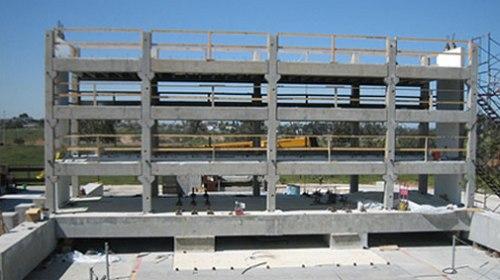Estimation of Building Response to Past Earthquakes through Structural Identification
Research Team: Babak Moaveni (PI), Andrea Belleri (visiting post-doc from University of Bergamo, Italy)
Funding: N/A
Duration: 5/2012 – present
Relevant publications to date:
Belleri, A., Moaveni, B., and Restrepo, J.I. (2014). "Damage assessment through structural identification of a large-scale three-story precast concrete structure." Earthquake Engineering and Structural Dynamics, 43(1), 61-76.
The objective of this study is to predict the unmeasured response of a structure to a recent ground motions based an equivalent linear model of the structure identified using its response to low-amplitude after-shocks or even ambient excitations. Such a model can provide an estimate of displacement and acceleration response measurements. These measurements can be used to compute inter-story drift and/or shear that are indicative of damage sustained by the structure during the last earthquake.
A stochastic subspace identification method will be used to realize an equivalent linear state-space model of a three-story, half scale, precast concrete building resembling a parking garage (see Figure 1) that was tested on the large outdoor shake table at the University of California, San Diego. Identification will be performed based on the low-amplitude white-noise and "after-shock" base excitation tests and the realized models will be used to predict the structural response to a damaging earthquake test preceding the low-amplitude base excitations.
This testing program on a precast concrete structure provides a unique opportunity to use dynamic data obtained from a complex large scale system at various levels of realistically induced damage. Such data cannot be reproduced by numerical simulation, where damage is highly idealized in the form of section reductions of structural members and/or sudden changes in boundary conditions. The loading sequence was designed to induce damage in the specimen progressively through scaled historical earthquake ground motions of increasing intensity. Between the seismic tests, the tested structure was subjected to low-amplitude white-noise base excitation and to small earthquake type excitations. The specimen responded to the white-noise and small earthquake base excitations as a quasi-linear system with modal properties changing as a result of damage and of retrofitting.
Figure 1. Half-scale precast concrete structure tested on the UCSD-NEES shake table
